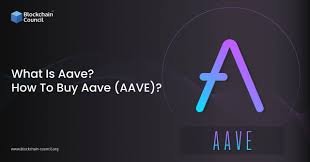
AAVE: The Evolution and Impact of African American Vernacular English
AlexJones
- 0
- 250
African American Vernacular English (aave) is a rich and dynamic linguistic system with deep roots in the history, culture, and identity of Black Americans. Often misunderstood or misrepresented, AAVE has made a significant impact on American language, media, and pop culture. This article explores the history, features, and cultural significance of AAVE, shedding light on its role as a legitimate and influential form of communication.
The Origins of AAVE
AAVE traces its origins back to the early years of the transatlantic slave trade, where African slaves brought with them various languages from across the African continent. When these diverse groups were forced into slavery in the American South, they developed a pidgin language, combining elements of African languages and English. Over time, this pidgin evolved into a more stable and complex creole language, which eventually became what we recognize today as AAVE.
The history of AAVE is intertwined with the history of African American experiences in the U.S., from slavery and segregation to the Civil Rights Movement and beyond. As African Americans were often excluded from mainstream institutions and schools, AAVE became a way for communities to retain their cultural identity and express shared experiences, struggles, and resistance.
Key Features of AAVE
While AAVE shares many similarities with Standard American English (SAE), it also has distinct features that set it apart. These include unique pronunciation, vocabulary, and grammatical structures. Some of the notable features of AAVE are:
- Phonological Features:
- The pronunciation of certain consonants and vowels may differ from SAE. For example, the “th” sound in words like “this” may be pronounced as “d” or “t,” resulting in “dis” or “dat.”
- Consonant cluster reduction, where the final consonants in words are dropped, is common. For example, “left” may be pronounced as “lef.”
- Grammatical Structures:
- Use of the copula: In AAVE, the verb “to be” (known as the copula) may be omitted in certain contexts. For example, instead of saying “He is happy,” an AAVE speaker might say “He happy.”
- Double negatives: AAVE often uses double negatives for emphasis, as in “I don’t know nothing,” which means “I don’t know anything.”
- Aspect markers: AAVE has specific markers to indicate actions that are habitual, ongoing, or completed. For instance, the use of “be” as a habitual aspect marker, as in “She be working,” means that she regularly works.
- Lexical Features:
- AAVE has contributed a significant number of words and expressions to mainstream American English, especially in music, entertainment, and youth culture. Phrases like “lit,” “bae,” “fleek,” and “savage” have become widely popular.
- Slang and colloquial expressions in AAVE often convey subtle nuances of emotion or social context. For instance, the word “no cap” means “no lie” or “truthfully,” while “fam” refers to close friends or family.
AAVE and Popular Culture
AAVE has had a profound influence on American pop culture, particularly in music, television, and social media. Hip-hop and rap music, which originated in African American communities, are perhaps the most prominent examples of how AAVE has permeated mainstream culture. Artists like Tupac Shakur, Jay-Z, Kendrick Lamar, and Cardi B have used AAVE to tell stories about the struggles and triumphs of Black life, with their lyrics shaping language trends across generations.
Beyond music, AAVE is a fixture in television shows and movies. Characters in shows like “The Fresh Prince of Bel-Air,” “Insecure,” and “Atlanta” speak in AAVE, often reflecting the realities of African American life while simultaneously introducing its linguistic features to broader audiences.
Social media platforms like Twitter, Instagram, and TikTok have further amplified AAVE’s presence, with many viral trends and memes rooted in its language. Influencers and celebrities like Beyoncé, Rihanna, and Issa Rae have popularized AAVE through their online and public personas, further cementing its cultural importance.
The Social Dynamics of AAVE
Despite its influence on popular culture, AAVE has faced significant prejudice and stigmatization. In education, employment, and media, speakers of AAVE are often perceived as uneducated or less competent. This linguistic discrimination, often referred to as “linguistic prejudice,” has historical roots in the marginalization of African Americans and their culture.
In schools, for example, children who speak AAVE may be judged for their language rather than their academic abilities, leading to lower expectations and unequal educational opportunities. The perception of AAVE as “incorrect” or “inferior” English continues to perpetuate harmful stereotypes about Black communities.
However, in recent years, there has been a growing recognition of AAVE’s legitimacy and complexity. Linguists have long argued that AAVE is a fully developed and rule-governed dialect, not a broken or improper form of English. Scholars like Geneva Smitherman and William Labov have worked to highlight the linguistic sophistication of AAVE and combat negative stereotypes.
The Cultural Significance of AAVE
AAVE is much more than a dialect; it is a key element of African American identity. It serves as a tool for solidarity within the Black community, helping to express shared history, experiences, and values. By using AAVE, speakers affirm their connection to African American culture, while also participating in the broader cultural conversation.
In recent years, there has been increasing awareness of the cultural appropriation of AAVE, particularly in how non-Black individuals use elements of the dialect without understanding its significance. The commodification of AAVE in music, fashion, and social media can sometimes dilute its cultural meaning, leading to tensions about who has the right to “borrow” from Black culture.
However, AAVE’s role in shaping American culture cannot be overstated. It is a testament to the resilience of African American communities and their ability to create new forms of expression that resonate far beyond their original context.
Conclusion
AAVE is more than just a way of speaking; it is a symbol of African American culture, history, and identity. Despite facing challenges and prejudice, it continues to thrive in everyday conversations, music, entertainment, and social media. As the influence of AAVE continues to grow, it is essential to recognize its value as a legitimate linguistic system that deserves respect and appreciation. Far from being a “broken” form of English, AAVE is a testament to the creativity, adaptability, and resilience of Black communities in the face of adversity.

